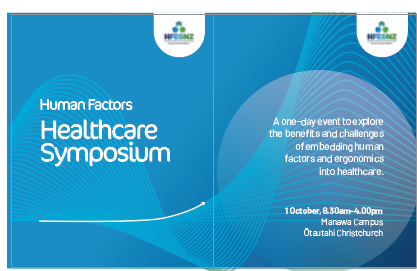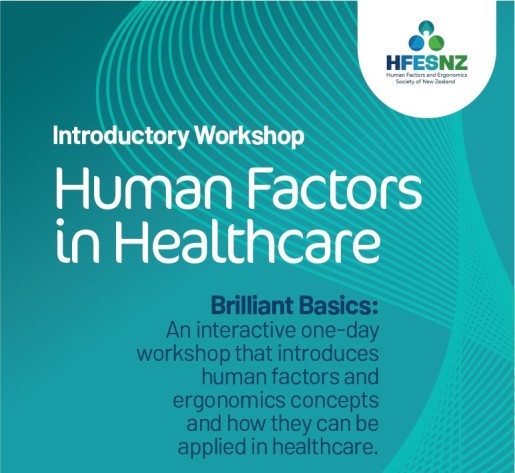Healthcare Special Interest Group
The focus of the Healthcare SIG is to promote the application of a human factors and ergonomics approach within the broader system through which healthcare is delivered.
Aims:
- Champion the application of human factors and ergonomics within healthcare
- Promote a systems approach aimed at optimising health and performance in the delivery of healthcare
- Provide a forum for members with an interest in healthcare to connect with one another
The Healthcare SIG meets three times / year with an invited speaker presenting at each. All events and notifications related to HFE in healthcare are communicated via the HFESNZ Newsletter.
Human Factors in Healthcare Symposium

Following the successful Symposium in Christchurch, some of the presentations are available below.
Cory Matulino: Introduction, HFE and Te Ao Māori
Prof. Bowie's keynote address: NZ Christchurch PBowie Keynote.pptx
Prof. Bowie's workshop: NZ Christchurch PBowie Workshop.pptx
Dr Carl Horsley's keynote address: HFESNZ Health Symposium - Keynote.pptx
Drs Nicola Green and Jo Wailling: Know Your IV Lines: HFE approach to programme evaluation
Introductory workshop: Human Factors in Healthcare - Brilliant Basics

Professor Paul Bowie presented a one-day workshop to introduce an human factors and ergonomics approach to healthcare in Tāmaki Makaurau on 23rd September 2025. The programme for the day is available here.
The powerpoint slides that Prof.Bowie presented in the workshop are also available:
